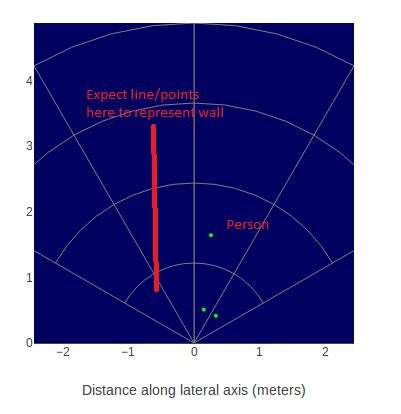Hello
This is releted to E2E post
The detection demo seems to detect objects (Humans, cars etc..) but does not detect a wall. In the below graph there's a solid wall running parallel to the detector 2m to the left of the sensor centre line. I am expecting a solid (or at least a row of dots) to represent the wall. It does not detect this wall (I’m sure it’s actually detecting it, but not classifying it as a wall) but it does detect individual point objects. What am I missing ?
We need this knowledge of a wall - i.e. the output from the primary RANGE FFT in the DSS application pipeline, prior to the secondary Doppler FFT. I cannot find a hook to access this data - where can I find such a hook in the API? Is this the correct approach ?
For information, I have copied the demo program for the 1642 from: ~/ti/mmwave_sdk_01_00_00_05/packages/ti/demo/xwr16xx/mmw. My plan is to modify this demo to include our algorithm and CAN interface, compile and download to the eval board and demonstrate this as a concept to management.
Regards
Bob Bacon
[unlocked 1/19/18]>LE


